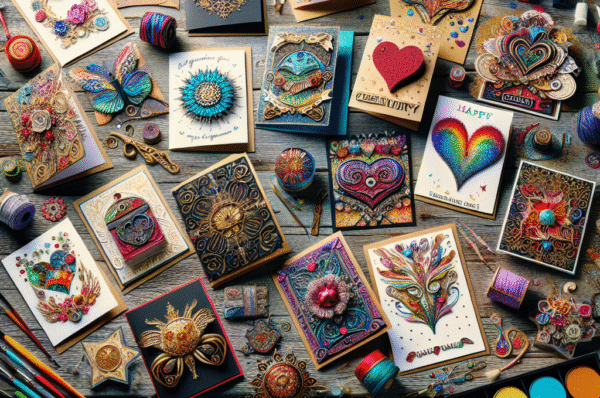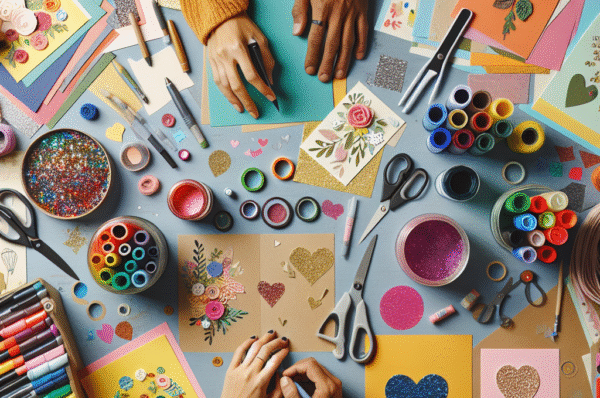In an increasingly digital world, the charm of a handcrafted card remains unparalleled. Custom cards, whether for special occasions, celebrations, or heartfelt messages, provide a personal touch that digital communications often lack. Designing these cards is not just about aesthetics but about unleashing creativity, expressing individuality, and crafting a meaningful connection. In this article, we explore the art of designing custom cards, highlighting techniques, tools, and inspirations that can elevate your card-making experience.
The Importance of Custom Cards
Custom cards serve various purposes, from invitations and thank-you notes to holiday greetings and personal reminders. They encapsulate sentiments and emotions that are often more challenging to convey through text messages or emails. The tactile nature of a card, coupled with personalized designs, makes them memorable keepsakes that recipients can cherish.
Moreover, custom cards allow for boundless expression. Every design tells a story, and every choice—color, typography, imagery—reflects the creator’s personality and the message they wish to convey. This form of art encourages creativity and can be a therapeutic outlet, making it a fulfilling endeavor for artists and novices alike.
Essential Tools and Materials
Before diving into the design process, gather essential tools and materials:
-
Paper and Cardstock: Variety is key. Experiment with different textures and colors of paper to find what suits your vision best.
-
Cutting Tools: Precision is crucial in card-making. Craft knives, scissors, and paper trimmers can help achieve clean lines.
-
Adhesives: Glue, double-sided tape, and adhesive dots are fundamental for assembling your creations.
-
Markers and Pens: Hand lettering can add a personal touch. Explore different nib sizes and colors to create unique typography.
-
Stamps and Inks: Rubber stamps and ink pads can introduce patterns and designs without the hassle of drawing.
- Digital Tools: Graphic design software like Adobe Illustrator, Canva, or Procreate can enhance your creative process, especially for those who prefer digital design.
Design Inspiration
Finding inspiration is a vital step in the creative process. Here are some sources to spark your imagination:
-
Nature: The colors and forms found in nature can inform your design choices, from floral motifs to earthy color palettes.
-
Art and Culture: Explore different artistic styles—modern, vintage, abstract. Incorporate cultural elements or themes that resonate with you or the occasion.
-
Seasonal Themes: Use the seasons as inspiration. Spring can bring florals, summer can inspire bright colors, autumn can feature warm tones, and winter can highlight cozy themes.
- Personal Experiences: Draw from your own life events and memories. Photos or mementos from a holiday or trip can inspire card designs that hold sentimental value.
Techniques for Creative Card Design
-
Layering: Create depth by layering different materials—colored papers, lace, or fabric. This technique adds texture and visual interest.
-
Mixed Media: Incorporating various elements such as watercolor, collage, or fabric can result in a unique and dynamic card.
-
Typography: Experiment with different fonts and lettering styles. Handwritten notes or calligraphy can lend an intimate feel.
-
Color Theory: Understand the emotional impact of colors. Use complementary colors for harmony or contrasting colors for a bold statement.
- Interactive Elements: Surprise recipients with pop-up elements, sliders, or pull-tabs to create engaging and memorable cards.
The Personal Touch
The beauty of custom cards lies in their personal touch. Adding a handwritten note or an original poem can transform a simple design into a heartfelt message. Engage the recipient by thinking about their preferences and experiences—colors they love, hobbies they enjoy, or shared memories. This thoughtfulness deepens the connection and elevates the significance of the card.
Sharing Your Creations
Once you’ve crafted your custom cards, consider sharing them with a wider audience. Social media platforms like Instagram and Pinterest are great for showcasing your work. You can also sell your creations through online marketplaces, craft fairs, or local shops. Engaging with a community of card-makers can provide feedback, inspiration, and opportunities for collaboration.
Conclusion
Designing custom cards is more than just a creative outlet; it’s a powerful form of expression that fosters connection and joy. Whether you’re creating a birthday card, a thank-you note, or a simple greeting, the process allows you to unleash your creativity and share a piece of yourself with others. So, gather your materials, let your imagination roam free, and embark on the delightful journey of card-making. Your creative endeavor can lead to moments of joy, cherished memories, and lasting connections, one card at a time.




